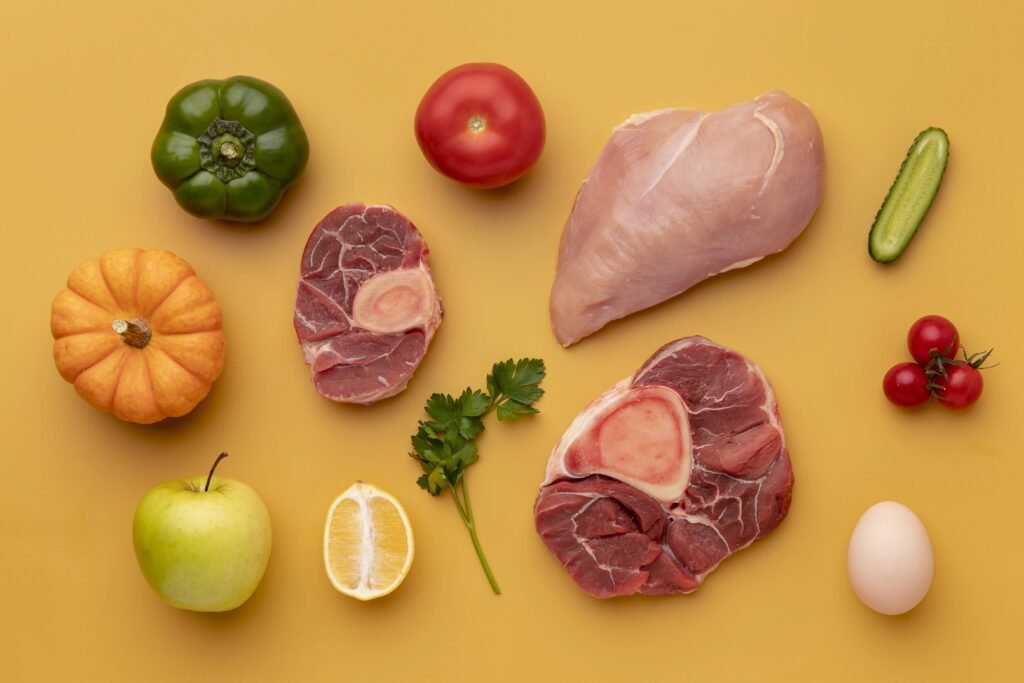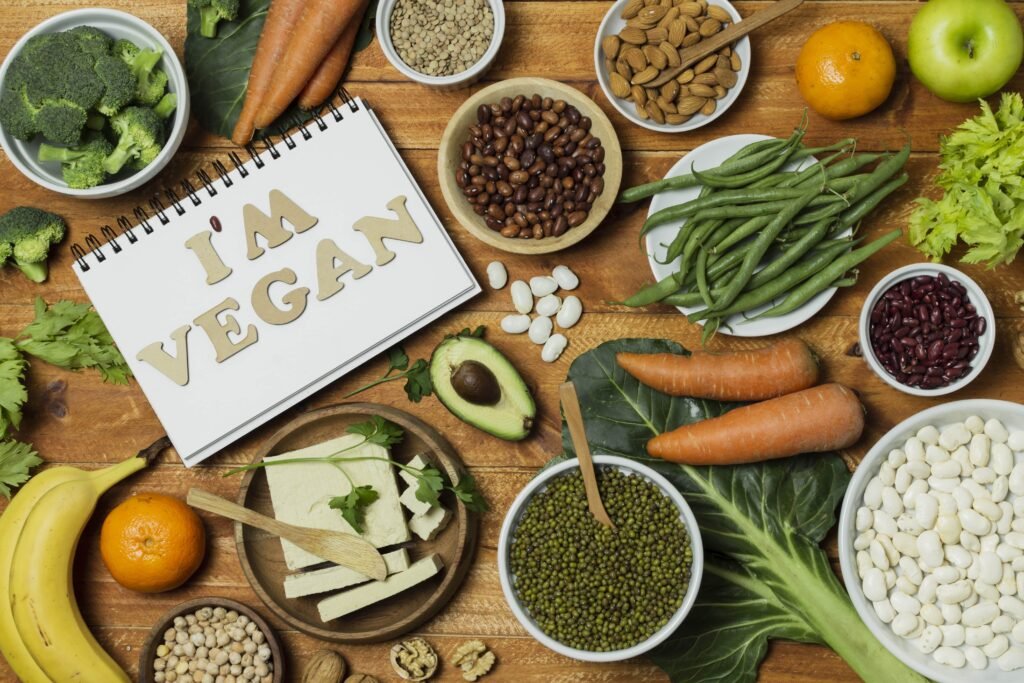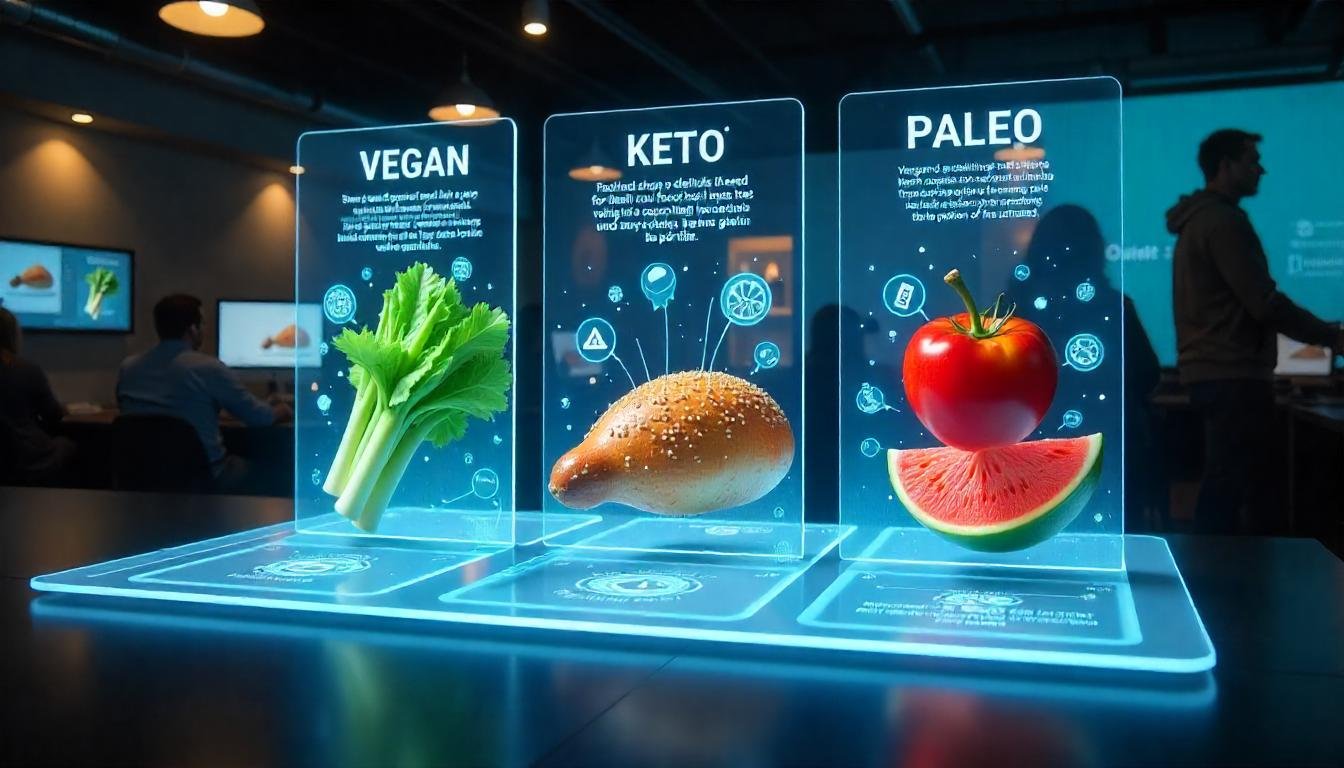Dealing with gut problems like bloating, IBS or “leaky gut” can feel overwhelming. I know this from personal experience: I’ve tried cutting out foods and experimenting with diets just to get some relief from constant bloating and discomfort. You may have too, wondering if going Paleo, Keto, or Vegan could finally be the answer. Each diet has its fans and its skeptics – and science to back both sides. In this post, I’ll compare Paleo, Keto and Vegan diets through the lens of gut health, sharing both research and real-life experience so we can find what really works for sensitive stomach. We’ll look at gut-healing foods, IBS triggers, leaky gut tips, and ultimately decide which approach is gentlest on our microbiome.
Before diving into each diet, let’s clarify why gut health is so important. Our gut microbiome (the trillions of bacteria in our intestines) has a “central role” in digestion, immune function, and even mood. When our gut lining is inflamed or “leaky,” we may feel bloated, gassy, experience cramps, diarrhea or constipation – classic IBS symptoms. The key to soothing the gut is often to remove irritants and to feed the good bacteria with fiber-rich, probiotic foods. Below, we’ll see how Paleo, Keto and Vegan stack up on both counts, and find best diet for gut health.
Table of Contents
Types of diet for Gut health
Paleo Diet and Gut Health

The Paleo diet (a.k.a. “caveman diet”) focuses on eating whole foods our ancestors could hunt or gather: meats, fish, eggs, vegetables, fruits, nuts and seeds. It eliminates grains, legumes, dairy, refined sugars and processed foods. In practice, that means no bread, pasta or milk – just protein and plants.
I remember a time I tried going grain-free like Paleo. Cutting out bread and pasta did reduce my belly bloating (gluten-free waffles helped!). The Paleo approach can help eliminate common gut irritants. By removing these, Paleo can naturally reduce inflammation in the gut. One health magazine notes that “the Paleo diet…removes most of the food groups that trigger [IBS]…and helps reduce overall inflammation in the body”.
Pros of Paleo for the gut:
- Eliminates common irritants. By cutting gluten, dairy, refined sugar and processed foods, Paleo naturally removes many foods that cause gas or inflammation in sensitive people. (For example, someone with undiagnosed gluten sensitivity might find relief from bloating just by going Paleo.)
- Focus on nutrient-dense whole foods. Paleo includes lots of vegetables, lean proteins and healthy fats. These foods are generally easier to digest than heavy grains or beans for some people, and they provide vitamins and minerals needed for healing.
- Gut-healing foods. Traditional Paleo emphasizes bone broth (full of collagen and amino acids to soothe the gut lining) and fermented vegetables (rich in probiotics). These can help “reward our gut microbes” and improve gut integ
Cons of Paleo for gut health:
- Low in prebiotic fiber. Without grains or beans, Paleo can be low on the soluble fibers (like resistant starch) that gut bacteria love. Over time this can starve good bugs and lead to constipation or microbiome imbalance.
- Potential nutrient gaps. Avoiding dairy can mean less calcium/vitamin D (if not replaced), and cutting grains could lower some B vitamins. Suboptimal nutrients make the gut lining more fragile.
- Not flexible long-term. Strict Paleo can be hard to sustain. Some people “cheat” by eating “pseudo-Paleo” grains like gluten-free oats. But then you lose the potential grain-free benefit.
In practice, many people find short-term relief on Paleo because they’re simply eating less processed junk and paying more attention to food quality. Eliminating refined sugar and thoughtful elimination of suspect foods can quiet an upset gut. But as the science above shows, for healthy gut flora we need a variety of plants – something even Paleo enthusiasts (and most studies) now recommend.
Keto Diet and Digestion

The Ketogenic (Keto) diet is a very low-carb, high-fat diet. It forces the body into ketosis (burning fat for fuel). Like Paleo, it removes obvious irritants – eliminating grains, starchy veggies, most fruits and sugars. In fact, Keto can be thought of as “Paleo on steroids” in terms of carb restriction.
When I first tried Keto for weight loss, my stomach initially felt better – the bloating from carbs went away. But soon I hit slow transit (constipation) and lost my morning bowel routine entirely. This is actually common on Keto: by cutting out carbs you often slash your fiber intake. Health experts warn that a keto diet is “often low in fiber and may harm the health of your gut microbiome”, potentially raising inflammation and reducing good bacteria. Fiber adds bulk and fuels the gut flora; without it, we risk constipation and dysbiosis. In fact, one case series found keto diets (high fat) increased inflammation in the gut and reduced beneficial fatty acids in people’s stool.
Despite the downsides, Keto does have some potential gut benefits for certain conditions. By restricting carbs, it naturally limits FODMAPs (fermentable carbs that trigger IBS). A keto meal plan essentially avoids many FODMAP foods (like wheat, onions, beans, and lactose-containing dairy). This can lead to fewer IBS symptoms for some.
Pros of Keto for gut health:
- High-fat, low-carb may ease IBS in some. By cutting out most FODMAP-rich foods, keto can reduce bloating and diarrhea for people with IBS or SIBO. One study even noted improvements in multiple IBS symptoms on a keto-ish plan.
- May reduce inflammation (short-term). Some evidence suggests keto/low-carb lowers certain inflammatory markers (though this may be partly from weight loss).
- Can be modified for fiber. A smart keto diet can include low-carb vegetables (avocado, leafy greens, broccoli, etc.) that provide fiber and nutrients. For instance, avocados pack ~10g fiber per cup, and greens like spinach or kale add bulking roughage with few carbs.
Cons of Keto for gut health:
- Very low in fiber (unless carefully planned). Without grains, fruits and many veggies, keto often falls short on soluble fiber, raising constipation risk. A Healthline review bluntly notes keto “may harm” the gut microbiome by eliminating many prebiotic fibers.
- Limited plant variety. Keto’s carb restriction can mean a monotonous diet (fat + animal protein), which starves microbial diversity. Gut experts warn that keto “decimates the gut” if it cuts out most fibrous plants. In other words, by removing the foods that feed the good bugs, the gut flora can become unbalanced.
- Potential digestive issues. High fat slows digestion, which for some people means bloating and nausea. And many keto followers report issues like constipation, diarrhea or gas as their bodies adapt (since nearly every food group is changed).
In summary, keto and gut health is a mixed bag. It can reduce IBS triggers but at the cost of fiber and diversity. If considering keto, focusing on plenty of low-carb veggies and perhaps fiber supplements is crucial.
Vegan Diet and Gut Benefits

A Vegan diet eliminates all animal products: no meat, dairy, eggs or honey. Your plate is filled with plants, plants, and more plants – whole fruits, veggies, grains, beans, nuts and seeds. This means it is theoretically bursting with fiber, antioxidants and phytonutrients – all things that nourish the gut microbiome.
When I switched to a vegan-ish diet during college (for both ethics and health), my digestion changed drastically. I suddenly had high-fiber smoothies and salads every day. The good news? My daily fiber intake soared, which many say feeds the good gut bacteria. Research supports this: one study found vegans had more of the good fermentation products in their guts (like short-chain fatty acids) and less of harmful ones. SCFAs like butyrate, produced when we eat plants, help “maintain intestinal barrier integrity” and calm inflammation. In other words, a diet high in plants tends to yield more gut-friendly compounds.
Moreover, large studies like the American Gut Project have shown that the best predictor of a healthy microbiome is the diversity of plant foods eaten. In fact, researchers say 30+ different plant foods a week is ideal for gut health. Vegan diets naturally encourage variety: lentils, kale, berries, quinoa, pumpkin seeds…the list goes on. Eating this rainbow means abundant prebiotic fibers and nutrients that support gut flora.
Pros of Vegan for gut health:
- Fiber-rich and varied. A well-planned vegan diet is typically very high in soluble and insoluble fiber (from beans, fruits, veggies and whole grains), which bulks up stool and fuels good bacteria. This promotes regularity and a healthy gut lining. One review notes that vegan diets are “associated with lower body weight” and “benefit microbial diversity“.
- Increases beneficial metabolites. As mentioned, vegans show higher levels of SCFAs in their gut, meaning more anti-inflammatory molecules. They also tend to have fewer potentially harmful byproducts of protein fermentation, like p-cresol and BCAAs. These changes point to a “healthier” gut environment.
- Low in gut-irritating fats and chemicals. Plant-based diets are typically lower in saturated fats and cholesterol, which can reduce gut inflammation. They also avoid additives and hormones found in animal products.
Cons of Vegan for gut health:
- Some plant foods can trigger IBS. Not all is rosy: many plant foods are high-FODMAP or gas-forming. Beans, lentils, artichokes, garlic, onions, broccoli, and even common fruits like apples are rich in fermentable carbohydrates. For someone with IBS, these can cause severe bloating, gas and diarrhea. As Healthline warns, “Many plant-based foods can worsen IBS symptoms. In practice, going 100% plant-based may require guidance (like combining Vegan with low-FODMAP principles) to avoid triggers.
- Nutrient gaps if not planned. Vegans must ensure they get enough vitamin B12, iron, zinc, calcium and omega-3 fats, because deficiencies can weaken gut health. One source notes vegan diets are “good for digestion” due to fiber, but cautions vegans to supplement B12, D, omega-3s and watch iron and calcium intake. Gut problems can worsen with any vitamin deficiency, so this is important.
- Possible gas and bowel changes. Even healthy fiber can cause initial bloating and gas (I experienced this myself when eating more beans). Your body needs time (weeks) to adapt to a flood of new fibers, or you may feel gassy. It’s a normal side effect of helping your gut microbes expand!
In summary, a Vegan diet has the most potential for long-term gut health because it maximizes plant diversity and prebiotics. It aligns with many gastroenterologists’ advice: the “number one factor of a healthy gut” is eating lots of different plants. However, simply going vegan without caution can exacerbate IBS, so one must choose “gut-friendly” plants (like oats, berries, and easily digestible veggies) and possibly work with a dietitian. A well-structured vegan diet, rich in fiber and fermented soy or grains, can dramatically improve digestion for many people.
Gut-Healing Foods to Look For
Regardless of which diet you try, there are some universal gut-friendly foods and habits we should all embrace. Think of these as the building blocks of a gut-healing diet:
- Fiber-rich Vegetables and Fruits. Non-starchy veggies (carrots, spinach, broccoli, peppers, etc.) and low-sugar fruits (berries, kiwi) provide prebiotic fibers. They help feed healthy bacteria. Aim to include a variety of colors and types – cruciferous veggies like broccoli and Brussels sprouts are especially good at boosting beneficial microbes.
- Whole Grains (or Paleo-friendly starches). For non-Paleo folks, whole grains like oats, brown rice, quinoa, and sourdough spelt bread add fiber. Paleo eaters can try starchy roots (sweet potato, squash, plantain) that also feed gut bugs.
- Fermented Foods. Yogurt (dairy or coconut-based), kefir, kimchi, sauerkraut, miso, tempeh and kombucha contain live cultures (probiotics) that add friendly bacteria to your gut. A spoonful of sauerkraut on a meal or a daily cup of kefir tea can help rebalance flora.
- Bone Broth and Collagen. Rich in gelatin and amino acids (like glycine), bone broth helps repair the gut lining. If you tolerate it, homemade chicken or beef broth can soothe inflammation. (Vegan option: miso soup or seaweed broths provide gut-soothing minerals.)
- Healthy Fats. Olive oil, avocado oil, nuts, seeds (chia, flax, hemp) and fatty fish provide omega-3s and monounsaturated fats that reduce gut inflammation. In fact, one gut-health guide specifically lists walnuts, olive oil and omega-3 rich foods as gut-friendly.
- Ginger and Turmeric. These spices have natural anti-inflammatory compounds. Ginger tea can ease nausea and help food pass through, while turmeric supports a balanced immune response in the gut (though harder to absorb without fat).
- Plenty of Water. Hydration is crucial – fiber needs water to keep things moving. Drinking water (and herbal teas) helps prevent constipation and keeps the mucus lining of the gut supple.
On the flip side, limit these gut-irritating foods: sugar and refined carbs, artificial sweeteners (which may disrupt bacteria), alcohol, and ultra-processed junk. Processed meats and excess red meat have been associated with worse microbiome profiles. In fact, a gut health site explicitly calls out artificial sweeteners, red meat, and processed foods as “some of the worst foods for gut health”. Try to avoid those during gut-flare periods.
Tip: Introduce high-fiber foods slowly. If you suddenly go from no beans to three cups a day, you’ll get bloated (I learned that the hard way!). Start with small servings of veggies and legumes, and increase gradually so your microbiome can adapt without revolt.
Comparison Chart: Paleo vs. Keto vs. Vegan for Gut Health
| Feature / Diet | Paleo | Keto | Vegan |
|---|---|---|---|
| Main Foods | Meat, fish, veggies, fruits, nuts | High-fat, low-carb (meat, eggs, cheese, oils) | Plant-based (grains, legumes, fruits, veggies) |
| Excludes | Grains, dairy, legumes, processed foods | Grains, sugar, fruits (mostly), legumes | Animal products, dairy, eggs, meat |
| Gut-Friendly? | Good – whole foods, fiber from veggies, but lacks prebiotic grains | Mixed – low fiber, not ideal for microbiome long-term | Excellent – high fiber, prebiotics, diverse plant foods |
| Prebiotic Foods? | Some (e.g., onions, garlic) | Very limited | Many (e.g., legumes, oats, bananas) |
| Probiotic Support? | Yes (fermented veggies like sauerkraut) | Limited (can include yogurt, but often avoided) | Yes (fermented soy, kimchi, etc.) |
| Inflammation Support | Anti-inflammatory if well-balanced | Can reduce inflammation short term | Strong anti-inflammatory benefits |
| Digestive Issues? | Can help reduce bloating (if sensitive to grains/dairy) | May cause constipation due to low fiber | Can cause gas/bloating initially, but supports gut long-term |
| Best For? | People with food sensitivities to grains/dairy | Those needing blood sugar control or weight loss | People seeking gut repair, energy, long-term digestive balance |
Conclusion: Finding What Works Best for Your Gut
When it comes to gut health, there’s no one-size-fits-all answer. Paleo, keto, and vegan diets each have their own benefits—and challenges. What matters most is how your body responds to the foods you eat.
If you’re dealing with gut issues, the key is to listen to your body. Try different foods, notice how you feel, and adjust your diet accordingly. A healthy gut loves whole, natural foods, plenty of fiber, good hydration, and a life with less stress.
You don’t have to follow a strict diet label. You can borrow the best parts of each—like the clean, unprocessed approach of paleo, the healthy fats from keto, and the fiber-rich plants from veganism—to create a balanced plan that works for you.
Your gut is like a garden—nurture it with care, and it will help you feel better every day.
